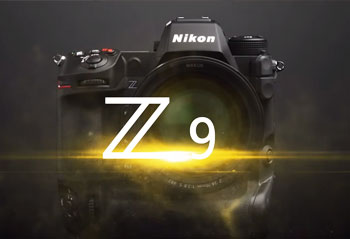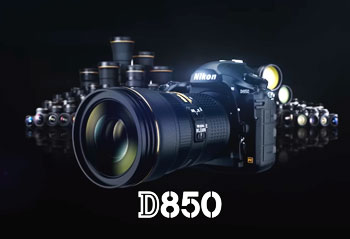The Nikon Z9 and D850 represent the pinnacle of Nikon’s DSLR and mirrorless camera lines. Both deliver professional-grade performance and imaging capabilities. But how do they stack up?
This in-depth 2100 word guide compares the Z9 and D850 head-to-head. Looking at resolution, speed, video, ergonomics and more, we’ll determine when to choose the groundbreaking mirrorless Z9 or the tried-and-true DSLR D850.
A Brief Comparison Table
| Feature | Nikon Z9 | Nikon D850 |
| Sensor Resolution | 45.7MP | 45.7MP |
| Burst Speed | 120 fps | 7 fps |
| AF Points | 493 | 153 |
| Video Resolution | 8K | 4K |
| Max Video fps | 60p | 30p |
| Viewfinder | EVF | Optical OVF |
| Battery Life | <500 shots | 1840 shots |
| Weight | 1340g | 1005g |
| Current Price | $5,500 | $2,999 |
Nikon Z9 Overview
First, let’s recap the highlights of the mirrorless Nikon Z9:

- 45.7MP full frame stacked CMOS sensor – Delivers incredible resolution images at up to 30 fps.
- 120 fps burst shooting – Lightning fast continuous drive up to 120 fps. Huge buffer depth.
- 493 point hybrid AF system – Sophisticated autofocus covers entire sensor. Next-level subject tracking.
- 8K 60p video – Impressive video specs including 8K recording and ProRes RAW.
- Smart AI processing – On-camera analytics to aid composition, focusing, and processing.
Pros
- Blazing fast burst speeds
- Best-in-class subject tracking AF
- Future-proof 8K video capabilities
- Enhanced durability and weather sealing
Cons
- Very high cost
- Heavy for a mirrorless body
- Battery life lags DSLRs
- 8K video has crop and limited recording time
Also Read: Comparison Between Canon R3 Vs. R6
Nikon D850 Overview
Released in 2017, the D850 remains Nikon’s top professional DSLR:
- 45.7MP BSI full frame sensor – Same high resolution as Z9 allows huge prints and cropping flexibility.
- 7 fps continuous shooting – Quick burst speed for a 45MP DSLR. Decent buffer depth.
- 153 point AF system – Wide coverage and accurate focus in most conditions. Good subject tracking.
- 4K 30p video – High quality 4K video with clean HDMI out for external capture.
- Optical viewfinder – Bright 100% coverage pentaprism OVF with illuminated overlays.
Pros
- Proven, reliable performance
- Great ergonomics and handling
- Long battery life up to 1840 shots
- Seamless optical viewfinder
- Dual card slots (XQD + SD)
Cons
- Fewer AF points than Z9
- Lower burst shooting speed
- No video beyond 4K 30p
- Large and heavy body
Also Read: Is Nikon D750 Better Than D7500?
Key Differences Between Nikon Z9 And D850
With the basics covered, let’s do a detailed breakdown comparing the capabilities of these two flagships.
Image Sensor and Resolution
- The Nikon Z9 and D850 share the same 45.7MP full frame sensor resolution. This allows for huge prints, aggressive cropping, and high detail images.
- However, the Z9 uses a newer stacked CMOS sensor with integrated memory. This enables incredibly fast readouts to attain speeds up to 120 fps.
- Image quality is outstanding on both cameras. The Z9 may have a slight edge in dynamic range and noise at very high ISOs. But most photographers would struggle to see a difference in real world shots.
Continuous Shooting Speed

- For burst shooting, the Nikon Z9 dominates with continuous drive modes up to 120 fps with the electronic shutter, 20 fps with the mechanical shutter, and 30 fps in DX crop mode.
- The D850 tops out at 7 fps, which is reasonably fast for such a high resolution sensor. 30-40 shot RAW buffers are possible.
- If you need blazing fast burst speeds for sports, action, and wildlife, the Z9 is vastly superior. The D850 still offers a good moderate burst mode.
Autofocus Performance
- The Z9 boasts Nikon’s most advanced subject tracking yet with its hybrid AF system covering the entire frame. Eye/face/body recognition is exceptional.
- D850 focusing is quick and accurate in Single AF. Subject tracking works fairly well but can’t match the tenacious lock-on abilities of the Z9’s system.
- For any challenging, fast paced shooting scenario, the Z9 has a decisive advantage when it comes to reliable autofocus and tracking.
Video Capabilities
- The Nikon Z9 offers future-looking video specs like 8K 60p, 4K 120p, and ProRes RAW recording when outputting over HDMI. The 8K mode has a crop.
- Video on the D850 is still very good, but tops out at 4K 30p without cropping. You do get clean 10-bit 4K output which allows high quality external capture.
- If you need cutting edge video features, the Z9 is miles ahead. The D850 remains a great option for those who shoot 4K or HD video.
Ergonomics and Handling
- Weighing 1340 grams, the D850 is a large traditional DSLR body with excellent ergonomics and long battery life. The optical viewfinder is seamless in use.
- At 1360 grams, the Z9 is massive for mirrorless. The EVF provides a crisp view but suffers occasional blackout. Battery life is lacking compared to optical finders.
- Which is preferable comes down to personal preference. The D850 handles like a pure photographer’s camera. The Z9 adds video-centric features but doesn’t quite match DSLR stamina.
Also Watch Thisw Review Video:
Nikon Z9 Vs. D850: Which Should You Get?
After comparing the cameras across all major specs and features, when should you choose the Z9 or D850?
Shooting Needs
- For sports, wildlife, birds, or any fast action, the Z9’s incredible burst speeds and subject tracking leave the D850 far behind. Z9 is ideal for speed.
- If you primarily shoot landscapes, portraits, or other slow-paced subjects, the resolution advantage of both cameras makes the D850 a formidable tool for half the price.
- Under demanding conditions like low light events or harsh weather, the Z9 provides better autofocus/tracking plus rugged sealing.
Video Use
- For professional videographers needing the latest video capabilities, the Z9 stands alone with exceptional 8K capture and buttery 120 fps 4K.
- The D850 remains a great option for photographers who shoot occasional video clips. But its video specs are outdated compared to the Z9.
Lens Pairings
- The Z9 can take full advantage of Z-mount mirrorless lenses while also using F-mount glass via the FTZ adapter.
- Existing F-mount lens owners get seamless compatibility with the D850. Using adapted Z-mount lenses works but autofocus can suffer.
Budget
- With a current street price around $5,500, the Nikon D850 costs thousands less than the Z9’s $5,500 MSRP. This makes the D850 much more accessible for many photographers.
- That said, the Z9 provides standout performance improvements over the D850 to largely justify the premium pricing.
All told, while the Z9 is an incredible technical achievement and Nikon’s new flagship, the D850 remains a reliable high-resolution DSLR choice – especially if you don’t need 120 fps bursts or 8K video.
Also Read: Comparison Among Nikon D3500, D5600 And D7500.
Frequently Asked Questions (FAQs)
Here are some frequently asked questions about the Nikon Z9 versus D850:
The Z9 has noticeable advantages in speed, video, and autofocus over the D850. But the D850 is no slouch and costs thousands less. For many photographers’ needs, the D850 provides similar resolution and handling.
Yes, both cameras share a 45.7 megapixel resolution. But the Z9’s stacked CMOS design allows incredibly fast sensor readout speeds. So while the base resolution is the same, their performance differs greatly.
The only Nikon cameras that truly exceed the D850 are the D6 with its robust build and speed, and now the Z9 with its well-rounded professional capabilities. But the D850 remains extremely capable.
The only camera that truly matches the Z9 is the Sony A1 with equivalent resolution and performance. Canon’s R3 comes close but lacks the resolution. No other camera equals the Z9’s mix of speed, AF, video, and image quality.
Also Read: Comparison Between Canon R3 Vs. R6
Conclusion
The Nikon Z9 and D850 are both powerful cameras aimed at professionals and demanding photographers. The Z9 dominates for speed, video, and focusing.
But the D850 remains unmatched for value. Depending on your shooting needs and budget, either camera will enable you to capture incredible images and videos worthy of their flagship status.
